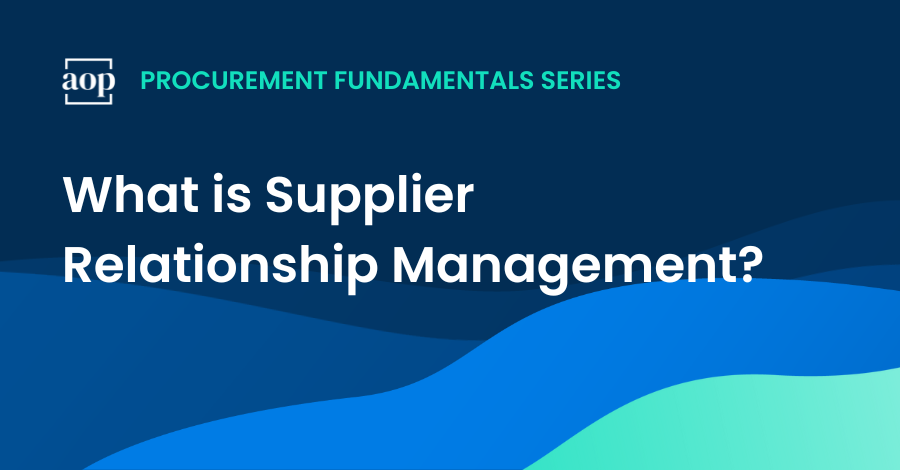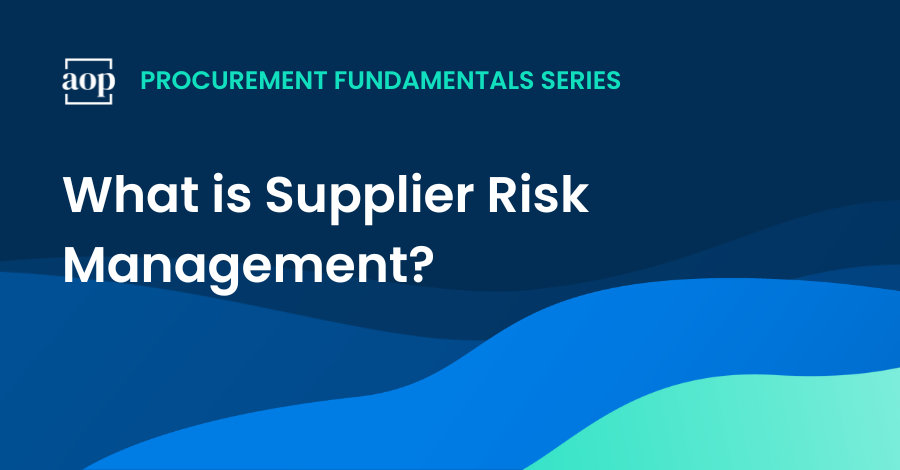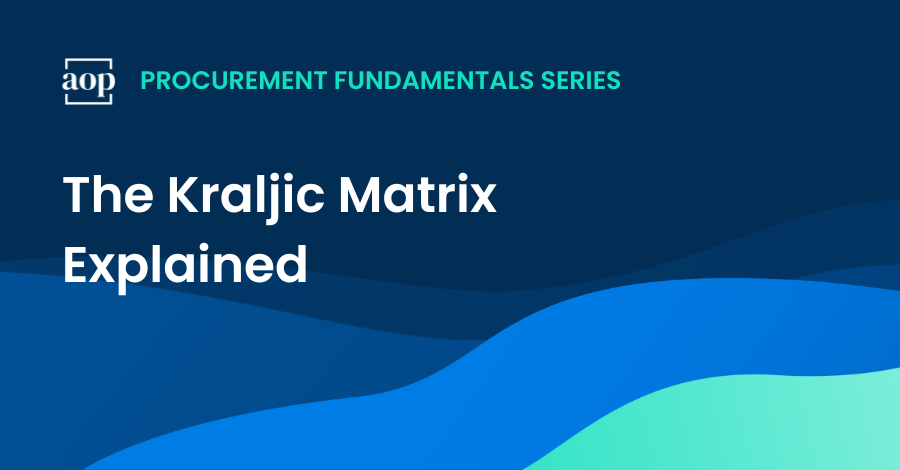4 min read
Supplier Management Explained – Definitions, Elements, and Examples
Philip Ideson : August 22, 2024

Supplier management is the process of overseeing the companies that provide goods and services to your business. This sounds simple. But today's complex supply chains make it tricky to know exactly how, where, and who should handle this work.
Supplier management comes up frequently in our interviews with procurement leaders on the Art of Procurement podcast. We want to give you a clear executive view on this topic. This guide covers all the key definitions, processes, and methods you need to know.
Skip ahead if you know exactly what you’re looking for:
- What exactly is supplier management?
- Why is supplier management important?
- Four key elements of supplier management
- Benefits of supplier management
What exactly is supplier management?
Supplier management is a systematic way to manage supplier relationships for your business. It covers many procurement activities and processes. These range from sourcing to negotiations and risk management.

Think of supplier management as the meeting point between strategic sourcing and operational procurement or purchasing. It establishes the procurement organization as a central interface between a business and the external world of supply networks.
Why is supplier management important?
Suppliers are central to every business's success. Most businesses simply could not operate without them.
Supplier management brings consistency to how you handle key provider relationships. It creates predictable processes across your business and stakeholder groups.
What systematic supplier management delivers:
- A reliable supply chain
- Reduced risks
- Better quality and innovation
When you manage suppliers consistently, you achieve real results. Cost savings become possible. Supplier performance improves. Stronger partnerships develop.
This matters more than ever in today's global market. Supply disruptions can seriously impact your business. Smart supplier management helps you stay ahead of these challenges.
How supplier management emerged
Supplier management as a discipline within procurement emerged from the need to streamline purchasing processes and ensure consistent quality and supply across increasingly large portfolios of suppliers.
The development of concepts like the Kraljic matrix in the 1980s highlighted the importance of categorizing suppliers based on risk and impact, emphasizing a strategic approach to sourcing. However, many experts think this view led to oversimplifications, where the administration of suppliers was often related to cost reductions and the effort to increase buyer leverage and purchasing power.
According to Dr. Oliver E. Williamson, Professor Emeritus of Business, Economics and Law at the University of California, “Muscular buyers not only use their suppliers, but they often ‘use up’ their suppliers and discard them. The muscular approach to outsourcing of goods and services is myopic and inefficient.”
Today, the emphasis in supplier management is placed on creating win-win situations and fostering sustainable relationships with suppliers. Procurement’s objective is to effectively manage a growing supplier base in volatile market conditions.
Four key elements of supplier management
Supplier management is a well-researched topic in academia and private industry, but there is no established theory or framework to govern it. Instead, you can think of it as a set of systematic supplier-centric approaches that includes at least four key elements:
- Supplier lifecycle management: The process used to identify, evaluate, and choose the right suppliers for your business. This can include anything from defining success criteria, assessing capabilities, requesting information or proposals, on-boarding new providers, and managing contracts and renewals.
- Supplier performance management: The processes and systems used to monitor and assess supplier performance. This may involve defining KPIs aligned with your business objectives and regular performance reviews, and key metrics related to supply quality, delivery, and cost.
- Supplier relationship management (SRM): The cultivation of mutually beneficial relationships with key suppliers. SRM can include anything from clear communication channels and protocols, co-development, price transparency, and joint innovation initiatives.
- Supplier risk management: The identification, assessment, and mitigation of supplier-related risks. This involves compliance with regulations and ethical standards and can also include diversification efforts to reduce supply dependency.
In addition to these four elements, supplier management an emerging interest area withing the large field of procurement technology, where you’ll find a multitude of tools and solutions for aspects such as supplier information management, supply risk data, contract management, and e-sourcing.
Who should be responsible for supplier management? (Example from marketing spend management)
Supplier management is not something that can be delegated and assigned to a single stakeholder or function. It requires a deep level of collaboration with both internal and external stakeholders – and this collaboration is often orchestrated by procurement.
Let’s take an example from the marketing category where both procurement and marketing share responsibility.
In most companies, the marketing team has a clear mandate to manage external suppliers and agencies responsible for hundreds of different marketing and communications related services. However, the effective management of marketing related expenditure across large businesses and different business units requires the support of procurement teams and clearly defined procurement processes. By following consistent supplier management processes, the marketing team can better leverage their buying power and ensure that value from supplier relationships is consistently realized across the whole business.
Supplier management requires cross-functional collaboration, but in most organizations procurement should lead and orchestrate these efforts to maximize value and minimize risks.
Benefits of supplier management
A more structured approach to supplier management offers numerous benefits to procurement organizations:
1. Value creation
Effective supplier management can lead to substantial cost savings or value creation. By fostering long-term relationships with key suppliers, organizations can negotiate volume discounts and favorable payment terms. In addition, collaborative efforts in process improvement and innovation can lead to reduced total cost of ownership. Strategic supplier relationships can create value through joint product development, shared market insights, and access to supplier innovations.
2. Improved quality and reliability
Close supplier relationships typically ensure better quality control. Regular communication, performance monitoring, and collaborative problem-solving lead to improved product quality and consistency. This, in turn, reduces defects, rework, and customer complaints. Additionally, strong supplier relationships enhance supply reliability, reducing the risk of stockouts or production disruptions
3. Increased operational agility
Supplier management can streamline business processes, reducing administrative overhead and cycle times. Integration of systems and processes with key suppliers can lead to more efficient order processing, inventory management, and forecasting. This improved coordination results in smoother operations, reduced lead times, and increased agility in responding to market changes.
4. Risk mitigation
Effective supplier management helps identify and mitigate supply chain risks before they happen. By maintaining a diverse supplier base and developing contingency plans with key suppliers, you can better handle supply disruptions, price volatility, and even geopolitical risks.
Bottom line on supplier management
Supplier management in procurement is not just about managing provider transactions; it’s about building strategic partnerships that drive organizational success.
The benefits of methodological supplier management typically extend far beyond cost savings, touching every aspect of the business from operational efficiency to innovation and sustainability. If you want more tips on this, explore our Supplier Management Best Practices Hub.
As supply chains become increasingly complex and global, supplier management is one key enabler to help procurement teams stay agile and responsive to market opportunities.






